The Worldwide D-Day Challenge Part Four – Completing The Invasion
June 22, 2015 by crew
At last we come to the end of our Worldwide D-Day Challenge (WWDDC), where BoW members from six countries came together to mount their own 71st anniversary commemoration of the Normandy landings on June 6, 1944.
For those just joining us, please take a look at Parts One through Three of our series, (planning, assembly, and opening results for this epic project. But for now, let’s get the final results and ultimate outcome!
In our last article, we covered most of the paratrooper actions in the predawn hours of June 6, 1944. Now we move to the beach landings, where six INITIAL Allied divisions hit German-held beaches, carried by the largest invasion armada the world had seen at that time.
PANZERS AT SWORD
We’ll start with Sword Beach, where Daniel (@pedmore) and his friends ran a titanic game of Flames of War. Not only were elements of the British 3rd Infantry Division represented, but also the follow-on 7th Armoured. He also had paratroopers in place behind the beach that the seaborne troops had to reach as one of their objectives.
As for the Germans, they had elements of the 716th Infantry, along with reinforcing units of the 21st Panzer Division (thanks to German wins at both Pegasus and Horsa Bridges). Just to make the game truly epic, they also took a little historical license and threw in some units of the 12th SS Division. This may have been just “a touch much,” since the game ultimately wound up as another German victory!
SLAUGHTER AT JUNO
The next beach over was code-named Juno, where the Canadian 3rd Infantry Division landed against more elements of the German 716th Infantry. We had two games here, the first being in Panzer Leader, run between Ben (@amphibiousmonster) and myself.
This was basically a “1/6000” hex-and-counter game recreating the entire three-mile assault beach, three brigades of the 3rd Canadian infantry, the historical locations for the all the German bunkers on a custom-drawn map, and all the constituent units of the German 716th Infantry who were there.
In all, our game included some 11,500 men and 380 armoured vehicles. The landings, however, did not go according to . Despite some initial successes with the naval bombardment, Canadian infantry still took a horrific pounding as they came ashore.
This was no surprise, as historically Juno was the bloodiest of the three “Commonwealth” beaches. In our game, however, Juno degenerated into a “Canadian Omaha.” Things were especially bad on Nan Beach, where the Queen’s Own Canadian Rifles (historically taking the worst losses on Juno), was effectively destroyed as a fighting force.
But as the Germans focused on the Canadian infantry, the tanks of the Fort Garry Horse and 1st Hussars managed to force wide breaches on both German wings and eventually collapse the centre. It just took too much time, and the Germans walked away with a bloody, narrow win.
Full details are available on the Juno Beach WWDDC thread in the Historical Forums, here.
Meanwhile, BoW Canadian Derek (@hauptmanncanuck) and Kris were taking a closer, more intimate look at Juno Beach through the eyes of Bolt Action. This game was focused just after the landings, when the Canadians pushed into the dunes and the heavily-shelled towns that were RIGHT on the beach.
But German reserves rushed to the meet them, including a PzKpfw IV tank of the 21st Panzer. Once the Canadian Firefly was taken out, the game was also more or less wrapped up as a German victory.
BREAKTHROUGH AT GOLD
The next Normandy beach to be invaded was Gold. We had three games here, played by Sven (@neves1789), Marc (@wendren), and Piers (@piers). Sven asked if he could write his own account of Sword Beach, so here it is below!
Sven’s dispatch from Gold Beach, King Sector...
Gold Beach, King Green sector, 7:30. The men of 6th Green Howards (69th Brigade, 50th Division) began their assault upon Fortress Europe. A strong current immediately delayed more than half of the battalion as the first platoons fought their way ashore.
The well-entrenched German defenders held their ground, and the first three waves were all but wiped out. Allied aircraft failed to find their marks and the armoured support that made it ashore immediately came under fire from the Mont-Fleury Battery. This reduced their impact to a minimum and left the fighting to the poor bloody infantry.
Check out the photo and caption below for the rest of this story!
Meanwhile, Marc also ran a game of Bolt Action on another sector of Gold Beach, code-named “Jig.” Here the game exploded as a decisive German victory, with the British troops never really managing a foothold at all. So with Sven’s British win and Marc’s British defeat, the final result on Gold Beach would come down to Piers’ tiebreaker!
Piers’ game in 20mm Battlegroup took place some miles inland, at a town called Fresney le Crotteur. Historically, the British landings at Gold went so well that part of the German reserves originally slated to stop the Americans at Omaha were instead detached and sent to Gold!
This is the “Kampfgruppe Meyer” force Piers features in his game, clashing with the 7th Greens Howards (part of the British 69th Brigade, 50th Northumbrian Division), backed up by the 4th/7th Dragoon Guards. Piers’ historical detail, superlative painting, and stunning tables all made this one fan favourite. Plus, this was played in Battlegroup, one of the best games out there for World War 2 tactical gaming.
Fortunately, this game shook out as a convincing British victory. This broke the Gold Beach tie and won this sector for the Allies – a win they sorely needed after setbacks on Sword and Juno. For more detail, please see Piers’ thread in the Historical Forum, here.
BLOODY OMAHA
One of the bloodiest spots of D-Day was Omaha Beach, where the US 1st and 29th Infantry Divisions came ashore against deadly resistance of the German 352nd Infantry Division. As such, when I made up my mind to attempt a “Dog Green, Omaha” game, I wanted to make sure I did it right.
The board was a challenge because part of what made Omaha so bloody was its topography, namely the high bluffs against which the tall German bunkers (historically, “widerstandnester” #70, #71, and #72) were built. But once we finally started rolling dice, all the work was worth it.
Dog Green was the sector that marked the far western wing of Omaha Beach. Our game featured the leading elements of the 116th Regimental Combat Team (RCT) of the 29th Infantry, attacking dug-in Germans of the 916th Grenadier Regiment (352nd Infantry).
The game was a nightmare, and rightly so. Ever see the first 20 minutes of “Saving Private Ryan?” This was that exact same stretch of beach. Our game turned out pretty like the movie did, with one exception. The Americans, despite all their casualties and courage, did NOT open the “Dog One” Vierville draw quite in time.
This resulted in the narrowest of possible German victories. For full details (and about 25 more photos), please check out the Dog Green, Omaha Beach live blog we uploaded as the game played out on June 6.
REDEMPTION AT UTAH
So far the Allies had suffered some serious setbacks in our WWDDC, and the outcome of our campaign was far from certain. Fortunately for democracy, we now come to Utah Beach, where the Allies finally managed to shove the balance of fate firmly in their direction.
First, the 4th US Infantry division had to get ashore. Historically, this was relatively easy because a happy accident landed much of the division on the wrong beach – where they found comparatively light German resistance. But in the Bolt Action game played between Chris (@chrisg) and Victoria, the Germans managed a tougher fight.
The final blast of an American flamethrower, however (and the well-timed arrival of air support), finally set the seal on this victory, and got things moving I the right direction for the allies at Utah Beach.
Chris and Victoria also ran a last-minute game recreating part of “Mission Detroit,” part of 82nd Airborne Division’s landings near the famous village of near Sainte-Mère-Église.
The Americans quickly got the upper hand on this one, taking the high ground that allowed them to pour a withering fire on the Germans.
The Germans eventually managed to close the distance, only to learn (much to their regret) just how good the Americans were at close quarters and hand-to-hand combat.
The Americans weren’t winning all the airborne-themed games, however. Up in Wisconsin, Scott (@smithsco) was pitting a force of the 101st Airborne against a German counterattack along the Douve River. The roughly marked the eastern boundary of the Utah assault zone, and holding bridges along this river was crucial to protect the American flank.
However, Scott’s game of Bolt action, (played in 20mm), saw German paratroopers and “Osttruppen” conscripts inflict terrible losses on the “Screaming Eagles” of the 101st.
The Americans held the bridge at La Porte, but paid a far higher price than was seen historically. The game was thus chalked up as a German victory, as the east flank of Utah was now far from secure.
At last we heard from Mitch (@mc1gamer), however, who set the final seal on American victory at Utah with his game of Bolt Action. This game was set late in the afternoon on D-Day, with elements of the 4th US Infantry, backed up by elements of 70th Tank Battalion.
The American mission was to achieve a breakthrough, as they were pushing inland from Utah Beach and trying to link up with airborne troopers of the 82nd and 101st. The ran into elements of 919th Grenadier Regiment (709th Infantry Division), but not only defeated the Germans, but also got significant forces successfully off the far end of the board. For full details, please see Mitch’s video battle report on YouTube.
Once again, I am doing a grave injustice to the meticulous work and detailed battle reports submitted by so many of the WWDDC members. Please check out the battle report threads linked above, or visit the WWDDC Thread for more detail on all the work, creativity, and imagination our players put into the success of this project.
Also, Chris Goddard and I have made our contributions to Combat Stress in the UK and The Wounded Warrior Project in the US.
If you’ve enjoyed what we’ve done here, please take a moment to click on these links and consider making a small donation to these great causes. For too many people “on both sides of the water,” wars and conflicts are anything but a game, and our veterans deserve our support.
Lastly, Chris and I would like to send out an “88mm-sized” THANK YOU to the 30-35 people in 19 groups (six countries) who wound up participating in the WWDDC.
Huge thanks also go out Warren and the Beasts of War team for facilitating our “Pegasus Bridge” kick off at the Bolt Action Boot Camp, and of course our amazing editor Ben (@brennon) who always makes these articles look so amazing. Thanks as always, and here’s to the next project!
If you would like to write an article for Beasts of War then please contact me at [email protected] for more information!
"Here the game exploded as a decisive German victory, with the British troops never really managing a foothold at all..."
Supported by (Turn Off)
Supported by (Turn Off)
"If you’ve enjoyed what we’ve done here, please take a moment to click on these links and consider making a small donation to these great causes..."
Supported by (Turn Off)





























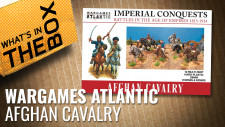

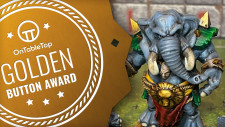
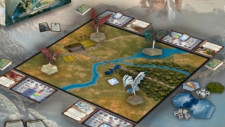

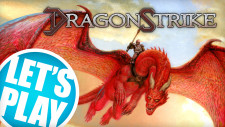
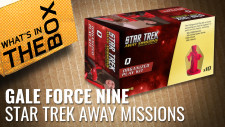

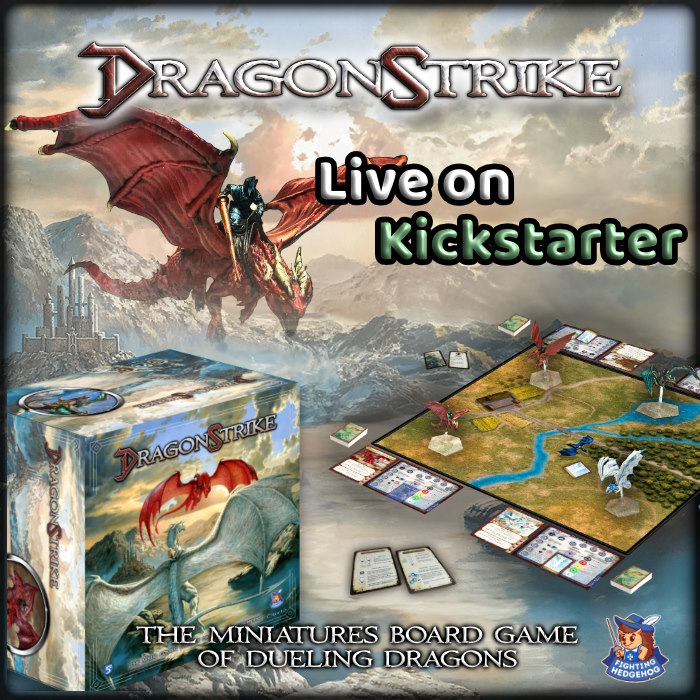

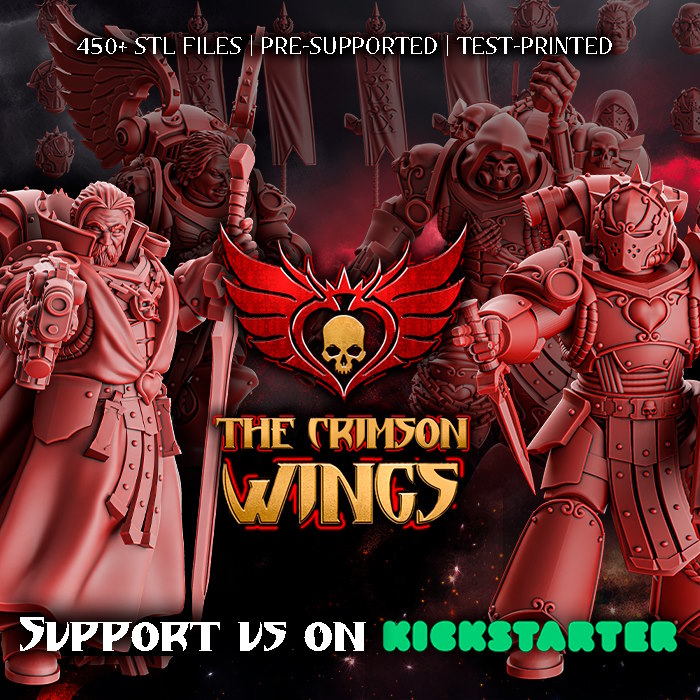


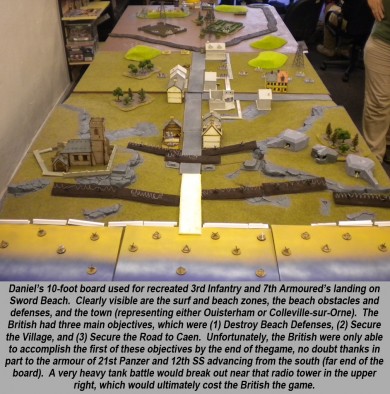
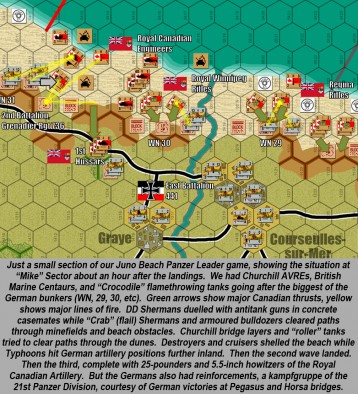
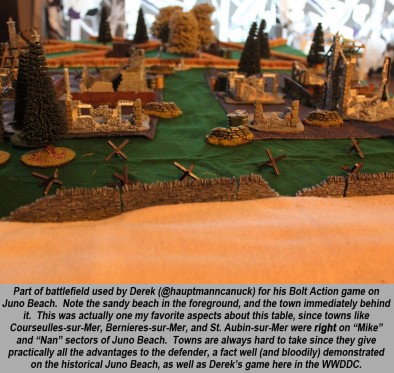
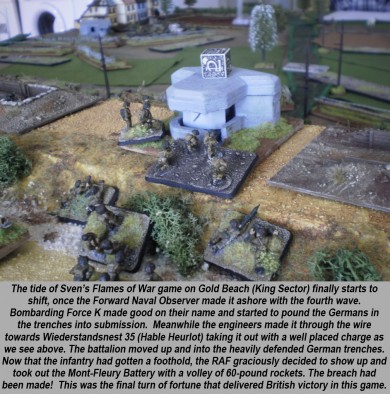

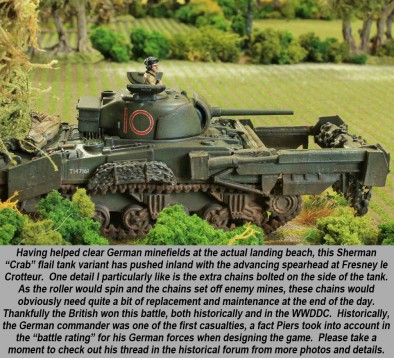
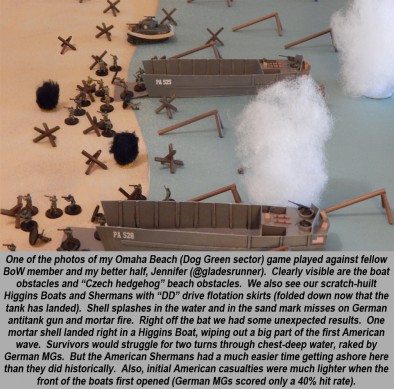
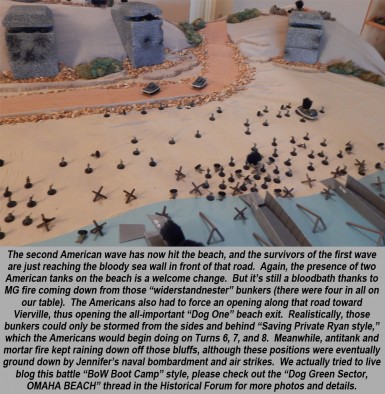
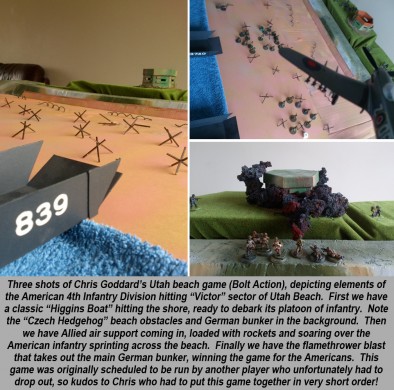

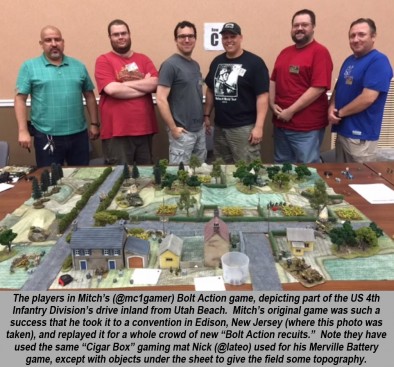
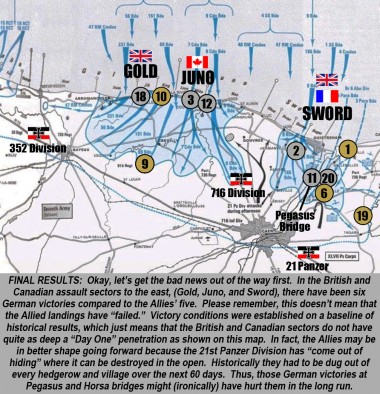
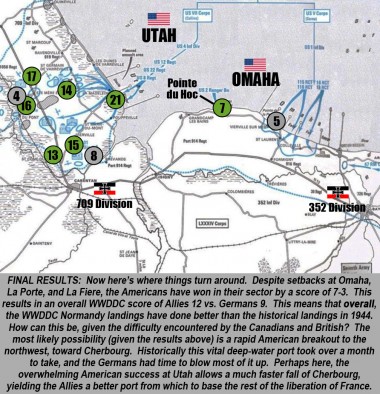

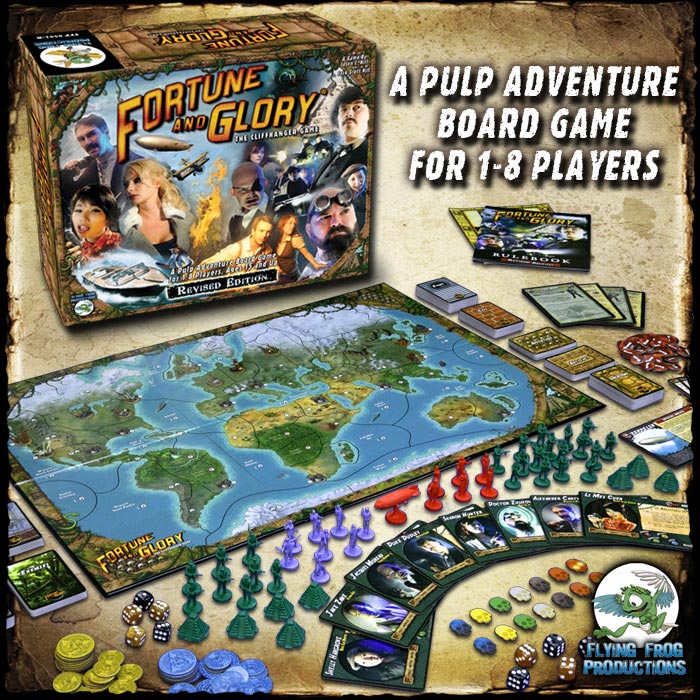

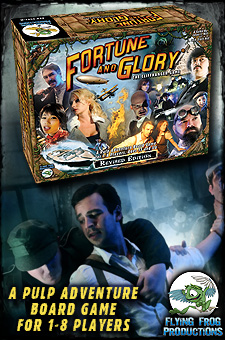
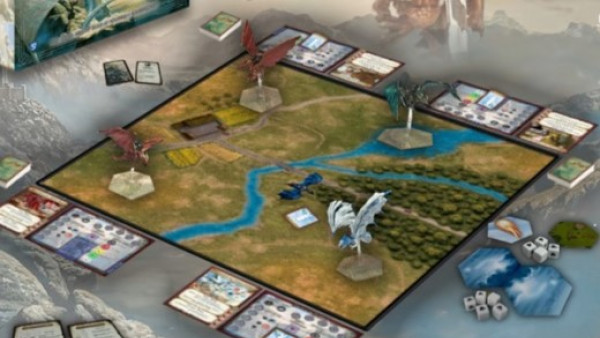
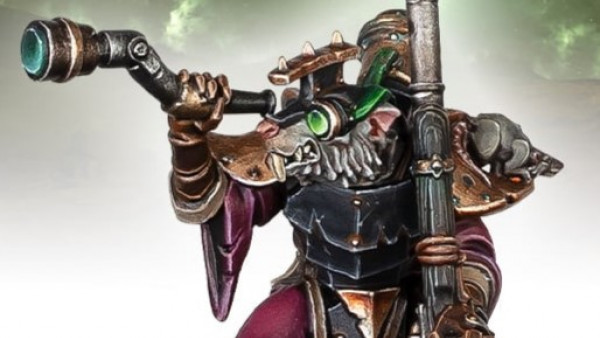
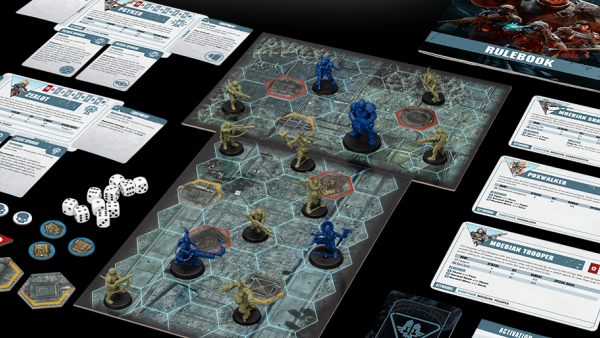
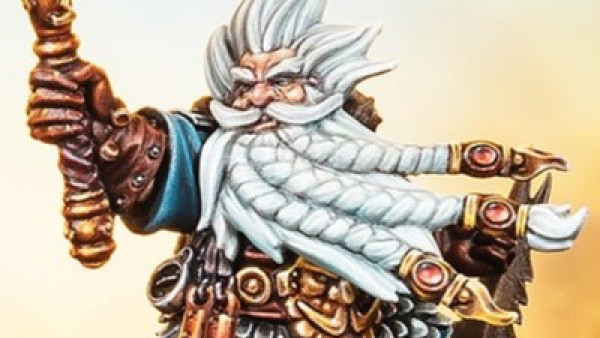
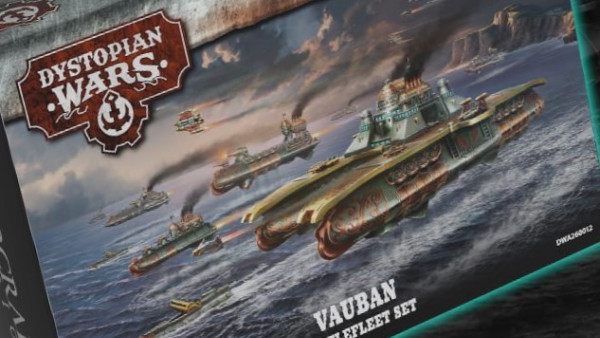

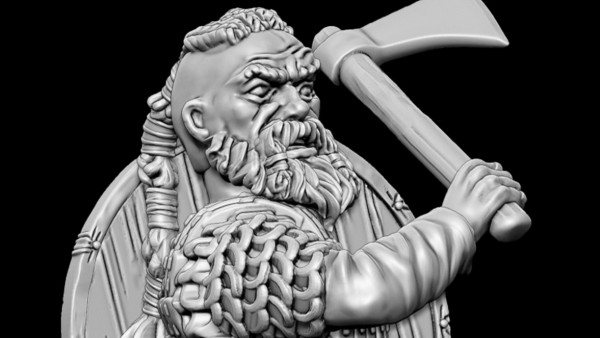


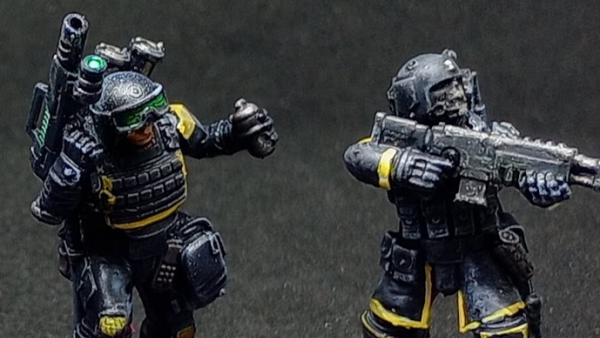

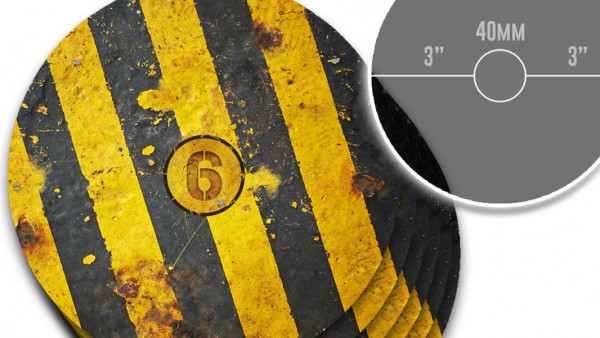












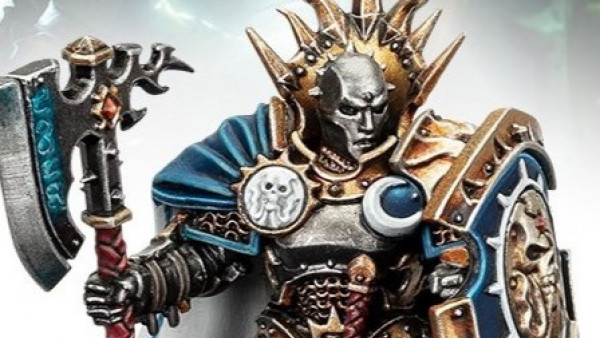
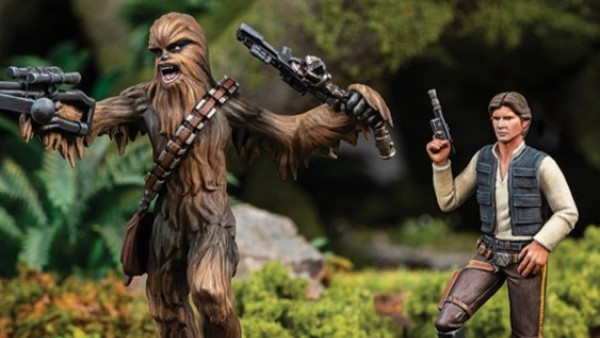
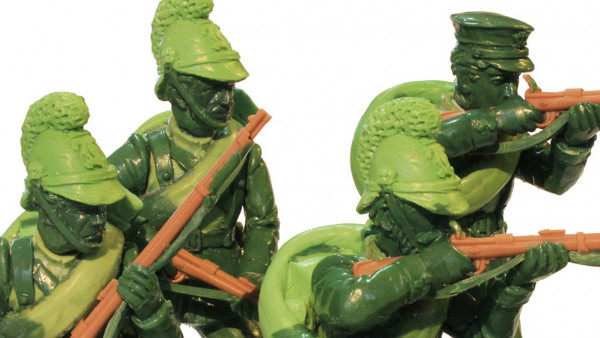

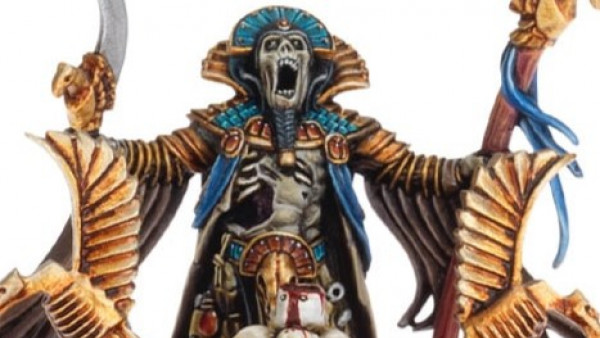
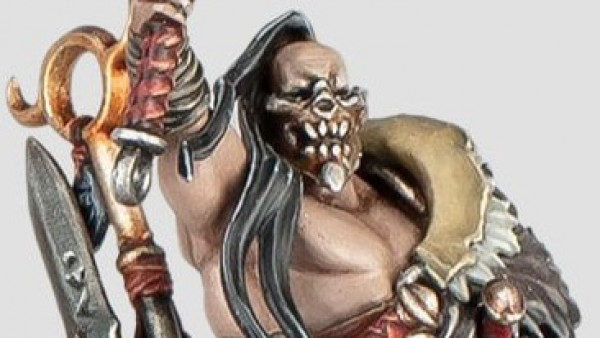
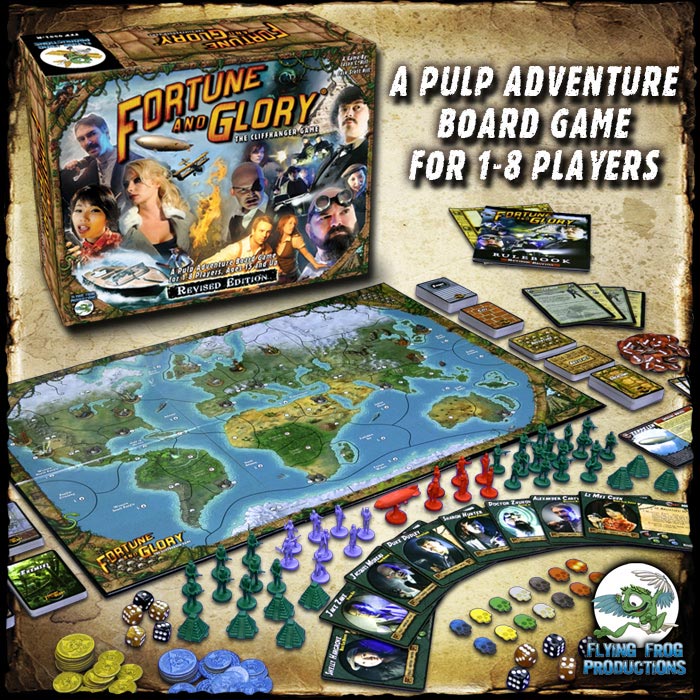

Might I just add my own deeply felt gratitude in person to any who supported the WWDDC, wether player, helper or just supporter we could not have done any of it without you and your deep involvement. I have seen tables here that would make a museum weak at its knees to have on display, what I would like to say though is that it mattered not how big, well painted, historically accurate painted figures nor armour, this was about you and your gaming and you were in charge, this was about you and for you on any level. I… Read more »
Would still be interested in Mortain, August 7 1944. Although I’m not sure when you say “D-Day+20” you mean STARTING at +20 or going up to +20. Would definitely do it Battlegroup this time. 😀
oriskany Just picked a starting day to give me a couple more days off from really going out with the ideas till then and gives people a sort of starting point away from D day as such but keeps something of a tie with the WWDDC without it being the same mate and I would like it to take in the major events on all three fronts west/east and pacific. Does not mean start gaming on D Day + 20 either just a starting point from which to take it forwards in gaming terms not a strict start on the… Read more »
Gotcha. So any battle that historically takes place after D-Day+20, but we’ll play them whenever the project comes together. Man, the British will get all the great tank battles in that scenario. Of course, the British LOST most of them, or at least paid horrific prices for very small gains. 🙁 I’m talking about Epsom, Bluecoat, Goodwood, etc. The Americans were fighting almost all infantry divisions further west, in all honesty (and I may earn some grief from any American history buffs here), the British were taking on the much tougher German divisions in the east around Caen. It wasn’t… Read more »
I could do no tanks. Just got the armoured fist box set for BA along with a few jeeps, so I could make that work. I could also do it with Battlegroup @15mm, with plenty of the same. I might need some guidance on lists but I’d sure get involved if there’s another go-round
@mc1gamer – Just finished my five Panther Gs from PSC in 15mm . . . so I gotta do something with at least some German tanks in it. 😀
Great stuff! Was a delight to be part of such a great idea / concept
Donation to Combat Stress made 🙂
Till next time!
Thanks, sir! We were glad to have you on board (our very first player to sign up, I think???) We’ll definitely have to do something like this again.
An absolute joy to have had you on board and such a well researched piece of gaming. Bloody good show mate.
always a joy to read
Excellent!
Great job on the article!
Thanks, @rasmus and @neves1789 . And I hope you saw, Sven, where I put the second half of your part of the article (Sword Beach) in the caption of your photo . . . and it made it into the baskctager magazine layout! Congratulations on that, too!
Awesome 😀 Thanks!
great work every one. The quality of the tables & models was staggering. finally to @oriskany & @chrisg for the detailed informative reporting. thanks again everyone.
Thanks, @zorg ! 😀
thanks Zorg
Well done all!
Market Garden you say Chris…… 😉
Well yes but up to market garden so the build up etc not straight to it. Again trying to give it some historical balance and time to get people on board and volunteers for running different stuff, that simply will need doing simply to take on all three fronts..
Made a stab at Market Garden for the 70th Anniversary last September 17. 🙂 Of course, this was just one game, by no means a campaign.
http://www.beastsofwar.com/groups/historical-games/forum/topic/september-17-%E2%80%93-70th-anniversary-commemorative-game-for-operation-%E2%80%9Cmarket-garden%E2%80%9D/
Fantastic, I don’t know American awards that well but give yourself the equivalent of the Victoria Cross!
You know, @gremlin – I was seriously considering some kind of “medal” or “decoration” system that Chris G and I could award to the players. But then I was afraid some players would feel excluded or overlooked, and so never brought it up to Chris. But the idea was that American players could win Bronze Stars or Silver Stars or even Medals of Honor (if they won their games), German players could win War Crosses, Iron Crosses, or Knight’s Crosses, and British players could win Military Medals, DSOs, and Victoria Crosses. 😀
Great minds think alike!
Why the heck didn’t you mention it I am still toying with the idea of simply sending out a certificate of merit to those who played even the ones like Uncle jimmy who was so bitterly denied his time in the games and to be honest their are a couple of people that do deserve mentioning in dispatch who did not play.
Chris G
I honestly thought about it, @chrisg , but like I said, once we started saying: “You did great! You did REALLY GREAT! You did, well . . . *sigh* you did okay . . . ” I was just worried that it would open new potential trouble spots. The opposite effect would have been “Hooray, everyone gets a medal . . .” which means in effect: “Who cares?”
I hope that makes sense. 🙂
oriskany that makes perfect sense I think everyone should get a campaign medal or something and there are people who definitely went beyond the call of duty my first nominations would be Yourself then Piers in that order
I know we have covered this but I would seriously ask that if you’re able you make a small donation to either of the charities and if your not in the UK or USA, please seek out one in your own country. We chose the Combat Stress as this represents that most terrible of injuries that has no physical attributes, it shows in the number of those sleeping rough, drink, abuse and not always the sort of group we would want to mix with, it is often the cause though of so many ex service personnel failing in CIVY STREET.… Read more »
I’m almost sad to see it end. Of course I didn’t have to do any of the hard work :). The article(s) were a Great summary of 20+ players and their very complex games. I love that everyone’s hard work got a chance to shine on the BoW stage thanks to Chris g’s idea and oriskany’s writing. There are some talented mini painters and table designers out there!
Oh, man @gladesrunner . 20+ players? We originally had 21 **groups,** each with more than one player obviously, although some groups admittedly “shared” players and two groups unfortunately had to drop out at the last minute. So we finally ended up with 19 groups / games from six countries (US, Canada, UK, Ireland, Belgium, and New Zealand). Best as I can figure, we had 30-35 actual players total.
Now for a new project . . . 😀
A truly great event guys. First a huge thank you to @chrisg and @oriskany for their hard work, trails and tribulations in organising and getting WWDDC off the ground and flying. Without your hard work none of this would have happened. Thanks to all those who participated as the work you guys put in on your tables and miniatures were great. Most of all the battles you played is what made this so exciting. Whether you won or lost your games did not matter as you were all outright winners in making this event a total success. From the sidelines… Read more »
thanks it was hard work but enjoyable to getting the WWDDC off the ground and to the success it was I totally agree with your sentiments and your input was always welcome and a huge thank you must go BoW team to facilitate WWDDC to make it a memorable journey for us all.
So do you fancy getting involved mate if we go further?
I second THAT motion, @chrisg . . . getting @jamesevans140 involved in future campaigns would be a major coup. 😀 Thanks very much for the kind words, James. Indeed we have to applaud all the players who participated.
It was a pleasure to read the reports. Not only because they were well written, but mainly thanks to all the people who decided to take their time and participate in this huge enterprise. A big thank you.
So what? Ardennes offensive up next? 😉
The Ardennes offensive is obviously out there to be done but as was done in the WWDDC the attempt was made at some sort of chronological order and this was done on in what was a relative short/tiny span when you look at it being D Day. It had a significant turn around time from being on an island the UK and suddenly becoming the huge turn around that it eventually became. I know how simplistic an answer that is and is almost a through away remark when looking at the total human cost. So in answer to your question… Read more »
Great question, @yavasa . Of course I’ve already run / written the Battle of the Bulge for Beasts of War (70th Anniversary last December and January, linked below). So if Chris wanted to run a Bulge campaign, someone else would have to write the articles (What? That oriskany guy is writing the same four articles again? What’s with that guy?:) ) It would be an interesting subject, though. There is a TON of misinformation, myth, and just straight-out “wrongness” out there about the Ardennes offensive. Trust me, I tripped over plenty of it myself six months ago. http://www.beastsofwar.com/historical/wargaming-battle-bulge-part/
Great series of articles, great concept. Working on 20mm Soviet, German, US and British forces for Battlegroup, Chain of Command and (usually) Bolt Action in my immediate group, so hopefully one day we can join in.
Thanks, @ckbrenneke . I’ve read a lot, heard a lot, watched a little re: Chain of Command. Definitely seems like an interesting system. That’s the one with the semi-randomized movement, right? Battlegroup is the one for me. I’m still far from an expert at it, I’ve only been tinkering with it for about 4 months (started using it for the recent World War 2.5 project of all things). But even when using it for something it wasn’t expressly designed for, it still performed great. Hoping to use it in more campaigns / projects going forward.
@ckbrenneke, Just wanted to point out something that we tried to maintain throughout the WWDDC was that it mattered not the size of force used along side the extreme quality of painting and building of the tables. It was as much about trying to get any player at any level or size of force, attempted to get them on board. So with respect any further gaming down the road that was mapped out by the success of WWDDC and the lessons learned. As long as you know no werewolves or zombies still and your aboard. This is of course if… Read more »
Hello all especially oriskany (Jim) certainly not reading anything negative in this but not counting this being counted, we, you and I have entered 22, 11 each comments and answers here. There is one other person who made two comments, and a further 10 one time comments from others. Not saying much except I feel sure some Trickcyclist (psychiatrist) might make much of that not letting it go as quietly as was first said by both LOL 🙂 . There are 12 people on here lets say 2/3 would want to climb on board of going forwards and have the… Read more »
Yeah, there are a lot of posts from me on this thread. I try to make a point of responding to everyone who posts on one of my articles, a practice I learned from Romain and his “Three Colours and Up” tutorials. I feel it’s just polite to answer and thank people who take time to post on your article / content. 🙂
A battle with a strong chronology is a good starting point imo
My vote would be Market Garden or The Ardenne Offensive 🙂
I have plenty of terrain for them both. 🙂 Personally I would prefer to take a break from the Western Front for a while, maybe Desert / Eastern Front / or even Pacific.
Awesome coverage. Beautiful tables from all the participants. Thanks for including mine in the wrap-up. I wish I had taken the pic with me in it too 😉 Was such fun running this. Can’t wait for the next one.
Thanks, @mc1gamer , and thanks again for including WWDDC mentions in your video!
https://www.youtube.com/watch?v=b6a1ppsPkrI
Nice report as always Jimbo… 😉 Sadly im too anal to play Market-Garden ahistorically… I did it for my MA and the real battle is exciting enough for me without making changes. Plus its one worth replaying as a pure historical refight… Ardennes… well we have something out for that later in the year so wouldn’t appeal to do it twice. You should look further afield, operation Bagration, or the defence on the Oder. Or KG Chill in Holland or many, many other forgotten fights. Rather than do the same things, choose something different and use it to teach people… Read more »
Thanks, @piers . . . and couldn’t agree more re: future projects. Like I said above to @lateo, I’ve been considering Desert / Eastern Front / or even Pacific? Granted, Pacific would require a significant investment in new minis, terrain, etc . . . but it would still be fun!
This is long but important I think, I aren’t the best word smith, I don’t have a degree in history or make and design intricate hex mapped games that are totally impressive, I enjoy wargaming for wargaming, not for historical outcome, historically accurate count me in if I had the funds, patience and skill. I am an average wargaming ex forces chap that just wants a good game and a better crack. So please forgive me if prattle on some about what it is that has made the WWDDC important to me and the thought of moving them forward’s and… Read more »
Why does a game based on a historical battle, a refight, automatically have the same outcome as historically? It clearly doesnt. The point is to take what was historically available and try and do better with it. Otherwise its no longer the setting you choose, but a fantasy version. Having say 12th SS parked on Omaha beach is not a D-Day refight… it may be fun but it bears no relationship to the real event, which if seeking to ‘replay’ on a stage such as this, surely the more you divest from reality the less it bears any recognition to… Read more »
But hey… I digress… play it how you want to play it, thats always the best way.
Again, I agree with BOTH of @piers ‘ posts, and with what @chrisg says above. PERSONALLY, I like to find a battle, historically take it apart to the most granular extent reasonably possible, convert that historical data into a gaming “language” (for me that’s Panzer Leader), and then re-fight the battle. I never use points, I never use lists. But I acknowledge that’s just a PERSONAL preference and plenty of players like using lists provided for them in gaming books. If it’s a radically new setting (Tarawa ’43, Madagascar ’42, Vichy vs. Free French in Syria ’42, etc) or we… Read more »
piers “But hey… I digress… play it how you want to play it, thats always the best way.” Two things to note on your answer 1, I totally agree with everything you said in both of your last comments in full. (that has to be progress on both our parts). 2, read answer one (its worth repeating 🙂 ) I am totally in the ballpark with Oriskany on being able to see both sides of the discussion. I learned a lot from WWDDC and I hope to take that forwards. And last but not least Piers I wish to thank… Read more »
I suppose alot comes down to time and particular interests. Im lucky, my other hobby since time began, is military history. So what others may see as a chore, I see as fun… for me researching the ‘fluff’ is all part of the hobby. Im also lucky in that my studio has quite an extensive WW2 library, so I can generally pull the info off a shelf with ease. Few have that luxury and it should not be a requisite to gaming historically. Its why with Battlegroup books we devote so much space to the history and background. It means… Read more »
Do you know mate I could actually say that we are pushing an open door here, furthermore I have gone on record with others clearly saying your contribution was one of the best. So how about you come and help steer one of the theatres that you have a taste for, perhaps the eastern front, it would be of course up to yourself or wether life would get in the way or you could commit to actually having a direct influence on a part of the follow up of WWDDC. I think I could discuss when does any wargame become… Read more »
I do confess . . . the “dream team” proposed here does sound tempting. Quite frankly, however, during part of WW2.5 and WWDDC, I was “between jobs” and had a lot of free time on my hands. Now I’ve been re-hired by my old company, and also picked up some more graphic design work. So with “professional” writing and artwork back on my plate, I have a lot less time than before. Also, between Bulge, WW2.5, and WWDDC, I have been working full-blast “for” Beasts of War since December. I’m not kidding, there are plenty of 12-hour days in there,… Read more »